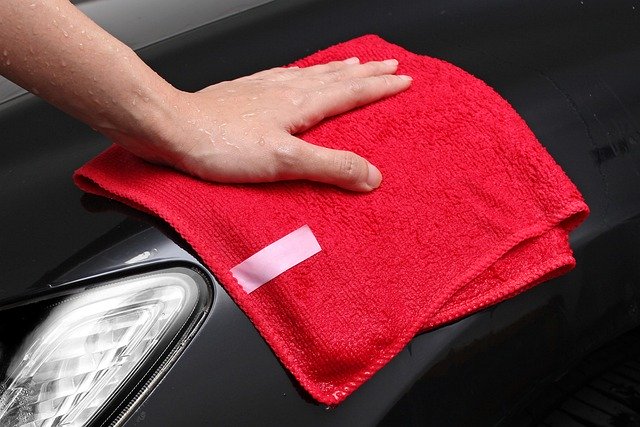Keeping your home’s dishwasher and washing machine clean and properly maintained is essential for ensuring their longevity and efficiency. Over time, these appliances can accumulate dirt, grime, and even harmful bacteria. By following the right cleaning and disinfecting practices, you can ensure that your dishwasher and washing machine continue to work effectively, leaving your dishes and laundry fresh and clean.
In this article on how to clean and disinfect your home’s dishwasher and washing machine, we’ll guide you through the step-by-step process of cleaning and disinfecting these appliances, sharing practical tips and expert advice along the way.
Why Cleaning and Disinfecting Are Important
Cleaning and disinfecting your dishwasher and washing machine may seem like an extra chore, but the benefits are well worth the effort. Here’s why it’s crucial to keep these appliances clean:
- Efficiency and Performance: Regular cleaning prevents the buildup of detergent residue, food particles, and mineral deposits in your dishwasher. Similarly, a clean washing machine ensures optimal performance by preventing clogs, improving water flow, and reducing detergent buildup.
- Hygiene: Dishwashers and washing machines can harbour harmful bacteria, mould, and mildew if not cleaned regularly. Proper cleaning and disinfection help eliminate these pathogens, ensuring the cleanliness and safety of your dishes and laundry.
- Odour Prevention: Over time, dishwashers and washing machines can develop unpleasant odours due to stagnant water, residue, or mildew. Regular cleaning helps eliminate these odours, leaving your appliances smelling fresh.
How to Clean Your Dishwasher
A clean dishwasher not only ensures sparkling clean dishes but also extends the lifespan of your appliance. Here’s how to clean your dishwasher effectively:
- Check the Drainage: Before cleaning, ensure that your dishwasher’s drainage is clear of any debris or clogs. Remove any visible food particles or residue.
- Wipe Down the Interior: Using a damp cloth or sponge, wipe down the interior walls, door gasket, and utensil holders. Pay special attention to hard-to-reach areas and corners where food debris can accumulate.
- Remove and Clean the Filter: Locate the filter in your dishwasher and carefully remove it. Rinse the filter under running water to remove any trapped food particles or debris. Use a soft brush, if necessary, to clean stubborn residue. Once clean, place the filter back into its position.
- Clean the Spray Arms: The spray arms distribute water throughout the dishwasher. Over time, they can become clogged with mineral deposits or debris. Remove the spray arms and soak them in warm water with a bit of vinegar. Use a toothpick or small brush to remove any buildup from the spray holes. Rinse them thoroughly before reattaching them.
- Run a Cleaning Cycle: To give your dishwasher a thorough cleaning, run an empty cycle with a dishwasher cleaner or a mixture of vinegar and baking soda. Follow the manufacturer’s instructions for the cleaner or add a cup of vinegar to the bottom of the dishwasher and sprinkle a cup of baking soda on the floor. Then, run a hot water cycle.
How to Disinfect Your Dishwasher
While cleaning your dishwasher removes dirt and grime, disinfection is necessary to eliminate harmful bacteria and ensure a hygienic environment for your dishes. Here’s how to disinfect your dishwasher effectively:
- Use a Disinfectant Cleaner: Choose a dishwasher disinfectant cleaner that is specifically formulated to kill bacteria and germs. Follow the manufacturer’s instructions for the proper amount and application method.
- Consider Natural Disinfectants: If you prefer natural alternatives, you can use white vinegar or hydrogen peroxide as a disinfectant. Pour a cup of vinegar or hydrogen peroxide into a dishwasher-safe bowl and place it on the top rack of your dishwasher. Run a hot water cycle to disinfect the interior.
- Clean and Disinfect the Door Seal: The door seal of your dishwasher can accumulate moisture and become a breeding ground for mould and mildew. Use a mild bleach solution or a mixture of water and vinegar to clean and disinfect the seal. Wipe it dry afterwards.
How to Clean Your Washing Machine
Keeping your washing machine clean is essential for ensuring fresh and hygienic laundry. Here’s a step-by-step guide to cleaning your washing machine:
- Clean the Exterior: Start by wiping down the exterior of your washing machine with a damp cloth and mild detergent. Pay attention to control panels, knobs, and any visible stains or spills.
- Clean the Dispenser Drawer: Remove the dispenser drawer and soak it in warm water with mild detergent. Use a soft brush to scrub away any detergent residue or mould. Rinse it thoroughly before placing it back into the washing machine.
- Run a Cleaning Cycle: Many modern washing machines have a specific cleaning cycle. If available, follow the manufacturer’s instructions to run a cleaning cycle with a washing machine cleaner or a mixture of vinegar and baking soda. This helps remove detergent buildup, odours, and bacteria from the drum and other internal components.
- Clean the Door Seal: The rubber door seal of front-loading washing machines is prone to mould and mildew growth. Wipe the seal with a cloth soaked in a diluted bleach solution or a mixture of water and vinegar. Ensure you clean between the folds and crevices to remove any hidden grime.
- Wipe the Drum and Gasket: After running the cleaning cycle, use a clean cloth or sponge to wipe the drum and gasket. Pay attention to any visible stains or residues, ensuring they are thoroughly cleaned.
How to Disinfect Your Washing Machine
Disinfecting your washing machine is essential to eliminate bacteria and prevent cross-contamination between loads. Here’s how to effectively disinfect your washing machine:
- Use a Disinfectant Cleaner: Look for a washing machine disinfectant cleaner that is designed to kill bacteria and germs. Follow the manufacturer’s instructions for the proper amount and application method.
- Consider Natural Disinfectants: Alternatively, you can use white vinegar or hydrogen peroxide as natural disinfectants. Pour two cups of vinegar or half a cup of hydrogen peroxide into the detergent dispenser. Run a hot water cycle to disinfect the machine’s interior.
- Leave the Door Open: After each use, it’s important to leave the door or lid of your washing machine open to allow air circulation and prevent moisture buildup. This helps prevent the growth of mould and mildew.
Conclusion
Regular cleaning and disinfection of your dishwasher and washing machine are vital for maintaining there performance, hygiene, and longevity. By following the steps outlined in this guide, you can ensure that your appliances continue to work efficiently, leaving your dishes and laundry fresh and clean. Remember, a little effort invested in cleaning and disinfection goes a long way in keeping your home appliances in optimal condition and providing a safe and healthy environment for your family.











